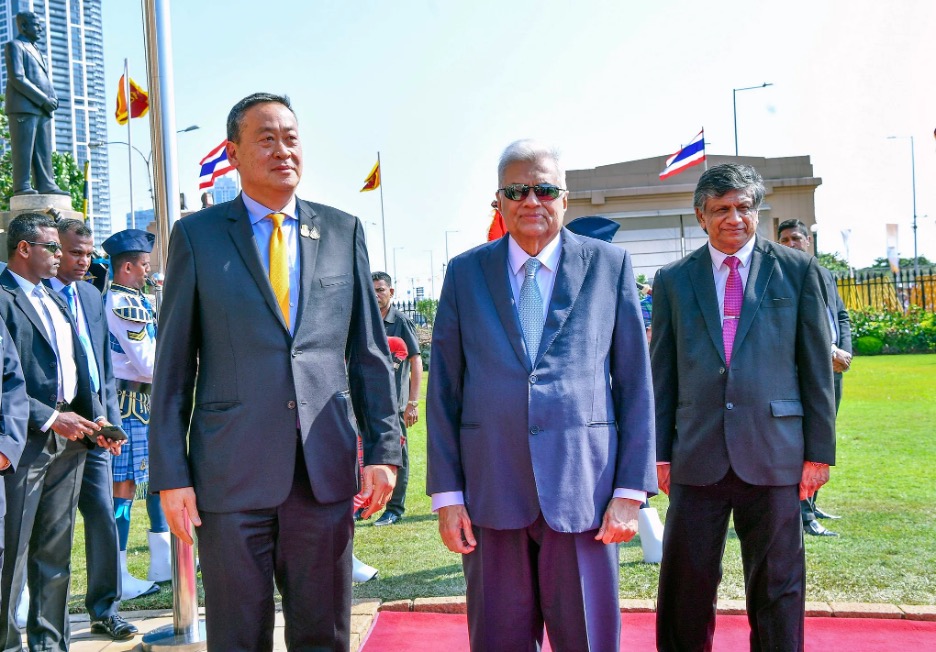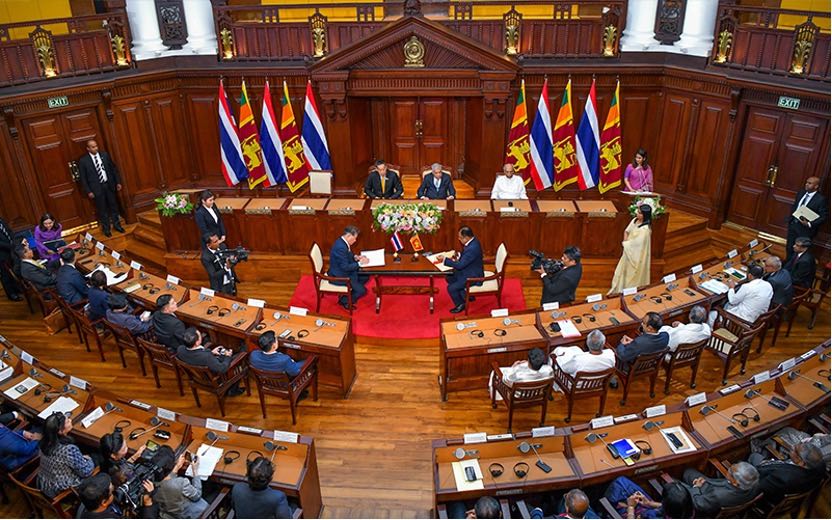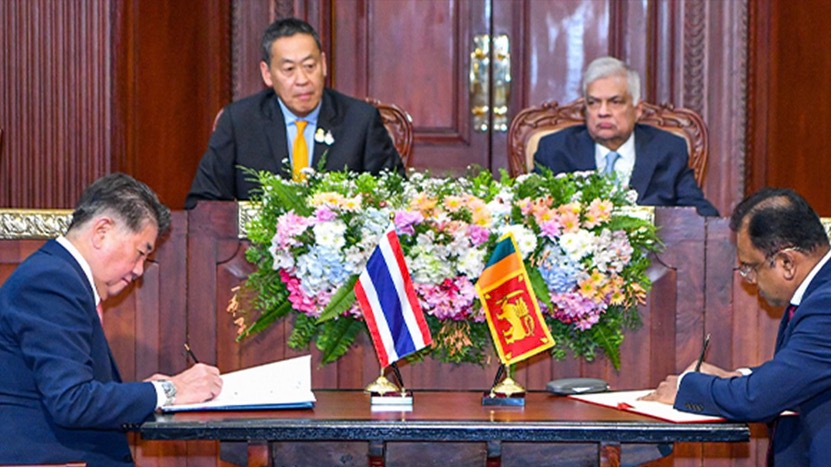On February 3rd, 2024, Thailand and Sri Lanka took a pivotal step towards strengthening their economic ties by signing a Free Trade Agreement (FTA). This deal, amidst the backdrop of a challenging global economic landscape, carries significant implications for both nations and holds the potential to be a game-changer for the region. In this blog, we’ll delve into the details of the agreement, analyze its relevance to the current economic climate, and explore the opportunities it presents for businesses and individuals.
Sri Lanka hopes that the signing of a free trade agreement with Thailand will help it get out of its worst financial crisis in decades. In an attempt to boost economic growth and support its shattered economy—which the World Bank estimates shrank 3.8% last year—the island nation has been refocusing on trade agreements since a catastrophic foreign exchange crisis threw it into a larger financial catastrophe. The brief statement continued, “The goal of the Free Trade Agreement (FTA) is to increase market opportunities through negotiations on a range of topics including trade in goods, investment, customs procedures, and intellectual property rights.” Srettha Thavisin, the prime minister of Thailand, led a delegation that traveled to Colombo on Saturday to sign the free trade agreement.
Both parties will benefit greatly from these commercial opportunities. “After the signing, we urge our private sectors to investigate the possibilities of mutual trade and investment,” Prime Minister Thavisin stated during a joint press conference. A new bilateral agreement on air services was also inked by the two nations, allowing for the liberalization of air travel between them. Approximately $460 million was exchanged between the two nations in 2021, according to data from the national bank of Sri Lanka. Sri Lanka imports food, rubber, plastics, medicines, electronics, and precious stones from Thailand and mostly exports tea and precious stones.

Understanding the Two Economies
SRI LANKA:
-Challenges
Sri Lanka has been grappling with a severe economic crisis since 2022, leading to high inflation, foreign exchange shortages, and widespread protests. The nation defaulted on its external debt and is currently undergoing an IMF-backed restructuring program. Sri Lanka’s GDP stands at $88.9 billion, placing it at the 65th position. Sri Lanka’s indices are relatively lower in comparison.
– Strengths
Despite the crisis, Sri Lanka boasts a diversified economy with vibrant tourism, apparel, and tea industries. It also has a skilled, English-speaking workforce and strategic geographic location.
– Outlook: Recovery remains fragile, dependent on successfully stabilizing finances, attracting foreign investment, and rebuilding international confidence. The FTA with Thailand is seen as a potential tool for export-led growth and diversification.
THAILAND:
– Strengths: Thailand is a relatively developed economy with a strong manufacturing base, particularly in automotive and electronics. It also benefits from a robust tourism industry and serves as a regional trade hub. Thailand is classified as a newly industrialized country. Its GDP reached 17.367 trillion baht (approximately US$495 billion) in 2022, making it the 9th largest economy in Asia. This economic strength is fueled by various sectors.
– Challenges:Thailand faces headwinds like slowing domestic demand, rising import costs, and potential trade disruptions. Additionally, income inequality and competition from neighboring countries remain concerns.
– Outlook: While growth forecasts have been revised downward, Thailand’s robust infrastructure and diversified economy provide a solid foundation for weathering global uncertainties. The FTA with Sri Lanka offers new export markets and investment opportunities.
Feature | Sri Lanka | Thailand |
GDP (PPP) | $312 billion | $834 billion |
GDP Growth (%) | -3.8 (2023) | 3.0 (2023) |
Inflation (%) | 54.2 (Jan 2024) | 5.0 (Jan 2024) |
Debt-to-GDP ratio | 112% | 60.10% |
Export Dependence (%) | 21% | 72% |
Main Exports | Tea, Apparel, Tourism | Cars, Electronics, Tourism |

Understanding the Deal
The Thailand-Sri Lanka FTA covers a wide range of areas, including trade in goods, services, investment, customs procedures, and intellectual property rights. The Sri Lanka-Thailand Free Trade Agreement (SLTFTA) is a significant bilateral agreement aimed at enhancing economic cooperation and fostering trade opportunities between the two nations. Let’s delve into the details: The negotiation process for the SLTFTA began in 2018 with the approval of the Cabinet of Ministers. Over the course of several rounds, both countries engaged in extensive negotiations covering 14 chapters and relevant annexes of the agreement. SLTFTA covers not only trade in goods but also investment, customs procedures, and intellectual property rights.
Key aspects include:
– Tariff Elimination: Over 90% of tariff lines will be eliminated within a set timeframe, boosting trade in sectors like agriculture, textiles, and machinery.
– Investment Facilitation: The agreement streamlines investment procedures, creating a more attractive environment for foreign direct investment (FDI).
– Enhanced Services Trade: Liberalized regulations across various service sectors, including tourism, healthcare, and finance, will facilitate the movement of professionals and knowledge exchange.
– Improved Customs Procedures: Simplified customs clearance processes will pave the way for faster and more efficient trade flows.
Relevance in the Current Economy
According to Thavisin, the nations decided to encourage investment in sectors including green energy, fisheries, food processing, and tourism. From 2005 to 2022, Thailand invested more than $92 million directly in Sri Lanka. Thavisin announced that daily flights between Bangkok and Sri Lanka would be resumed by Thailand’s flag carrier, Thai Airways, next month, adding to the country’s tourism boom. Since filing for bankruptcy in April 2022, Sri Lanka has been experiencing an economic catastrophe. The country owes more over $83 billion in debt, the majority of which is owed to international creditors. Due to the situation, Gotabaya Rajapaksa, the then-president, was overthrown by protesters. The global economy faces headwinds like rising inflation, tightening monetary policies, and geopolitical tensions. In this context, the Thailand-Sri Lanka FTA offers several advantages:
– Boosting Economic Growth:By eliminating tariffs and streamlining trade procedures, the deal is expected to increase bilateral trade by up to 50%, creating jobs and driving economic growth in both countries. Sri Lanka faces higher central government debt (84.1% of GDP) and external debt stocks (60.8% of GNI) compared to Thailand.
– Diversifying Trade: Sri Lanka, currently grappling with economic challenges, can diversify its export markets and reduce reliance on traditional partners. Thailand, facing a slowdown in domestic demand, can access new markets for its products and services.
– Promoting Regional Integration: This agreement reinforces economic cooperation within South Asia and contributes to the broader goal of regional integration, such as the ASEAN-India Free Trade Area (AIFTA).
– Enhancing Competitiveness: Increased competition arising from the FTA will incentivize businesses in both countries to improve efficiency and product quality, making them more competitive globally.

Current Data and Opportunities
Here’s a look at some current data highlighting the potential of the deal:
– Bilateral Trade: In 2022, trade between Thailand and Sri Lanka stood at around $352 million. The FTA is estimated to push this figure to $1.5 billion by 2027.
– Key Exports: Sri Lanka exports tea, spices, apparel, and precious stones to Thailand, while Thailand exports rubber, plastics, and electronic equipment to Sri Lanka. The FTA will open up new opportunities for diversification and expansion in these sectors.
– Tourism: The new air services agreement between the two countries is expected to boost tourist arrivals. Thailand, a tourism powerhouse, can attract Sri Lankan tourists, while Sri Lanka can leverage Thailand’s expertise to develop its own tourism sector.
Challenges:
The stability of Sri Lanka’s economy Sri Lanka must successfully stabilize its finances and draw in investment in order to reap the full benefits of the Free Trade Agreement. For both nations to profit most from increased commerce, infrastructure development must be prioritized. For implementation to go well, regulatory harmonizations—which harmonize regulations and reduce non-tariff barriers—are essential. Furthermore, sustainable success requires ensuring that many stakeholders and nations alike realize equitable rewards.
Predicting the future outcome is complex and depends on several factors:
Timeline and efficacy of implementation: Timely and effective execution will hasten favorable results.
Global economic environment: Trade flows and investment can be impacted by external variables such as recessions and trade wars.
Changes to domestic policies: The efficacy of the FTA may be impacted by domestic policies in both nations.
Adaptation of businesses and consumers: Businesses and consumers require time to adjust to the new trade environment.
Looking Ahead
The Thailand-Sri Lanka FTA is a pivotal step towards fostering economic cooperation and growth in the South Asian region. While challenges like infrastructure development and regulatory harmonization remain, the agreement has the potential to unlock significant opportunities for businesses and individuals in both countries. As implementation progresses, it’s crucial to monitor its impact on various sectors, address potential concerns, and ensure equitable benefits for all stakeholders. This deal, combined with ongoing regional integration efforts, could pave the way for a more prosperous and interconnected Southeast Asia. While the Thailand-Sri Lanka FTA holds promise for both nations, their diverse economic realities underscore the need for tailored strategies to maximize benefits and ensure equitable development. The success of this deal hinges on effectively addressing underlying economic challenges and leveraging each country’s strengths for mutual prosperity.
Written by – Nafeaa Vohra
Edited by – Khalid Khursheed
